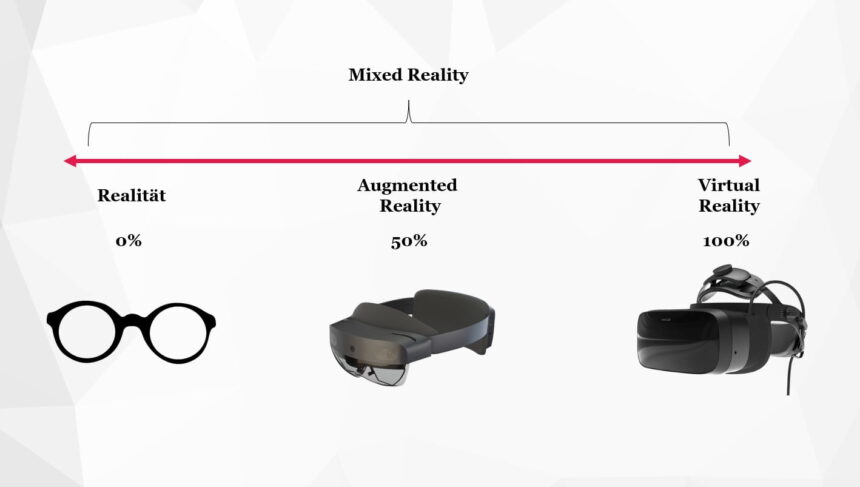When virtual reality (VR) users got sick after immersing themselves in virtual worlds, mixed reality was advanced as a potential solution to the cybersickness afflicting metaverse enthusiasts throughout the world.
Motion sickness is induced by wearable technology, triggered by a “discrepancy” between the body’s sensory signals.
According to research, cybersickness varies based on immersion, with users exposed to augmented reality (AR) for a long time displaying oculomotor disturbance (headache, dizziness etc). As opposed to virtual reality, which primarily causes disorientation.
What is mixed reality?


Mixed Reality according to Milgram and Kishino (1994). Image: MIXED
The term mixed reality (MR) was coined by interface researcher Paul Milgram in 1994. He defined it as “a continuum in which individual immersive technologies such as VR, AR, or video-based AR (pass-through AR) exist.”
Since then, the term has been used widely. In essence, according to Milgrim, MR is a fusion of both real world and digital content. In MR, one is able to seamlessly move via both real and virtual worlds simultaneously.
The best known example of an MR is Microsoft HoloLens, a head-mounted device fitted with lenses to cover one’s eyes. The device projects holographic visuals that a user can interact with and control. It will also permit you to interact with reality and simulate a virtual world.
Also read: People Who Struggle With Identity Find the Metaverse a Safer Place to Be Themselves
The short version is that mixed reality is a combination of the best of VR and AR, blending “virtual content or objects with the real world in an interactive, immersive way.” Objects in MR tend to appear as replicas of those in the real world.
Can mixed reality be a cure to cybersickness?
People suffering from cybersickness exhibit symptoms like general discomfort, eye strain, headache, stomach awareness, nausea, vomiting, and. They can also extend to pallor, sweating, fatigue, drowsiness, disorientation, apathy and even in some cases postural instability and retching.
Cybersickness is different from motion sickness, in that it can be caused by the visually-induced perception of self-motion; real self-motion is not needed, experts say. It is also different from simulator sickness.
There is a growing body of research on the effectiveness of MR in curbing cybersickness. One study by the Iowa State University found that MR can provide a more natural and comfortable experience for users, lowering feelings of disorientation and nausea. Unlike virtual reality, mixed reality allows users to see the real world while also interacting with virtual objects.
Other virtual reality developers have introduced an artificial “horizon” in VR video that is said to reduce the severity of motion sickness.
“It is thought that a visible horizon reduces the sensory conflict by providing a frame-of-reference that allows the visual system to synchronize with the perceived motion,” the researchers say.
Most recommendations are to take a 10- to 15-minute break every half hour to delay the onset of cybersickness. But not enough research or testing has been done.
Intense research needed
While MR is being employed to cut the effects of cybersickness, some studies have shown that it does not eliminate it completely. Symptoms could still be felt even when using mixed reality, per some experts.
“Mixed reality is very much like augmented reality – which means the projects using this tech will still have to overcome the same issues with cybersickness the whole sector is facing,” Alex Kim, chief monetization officer at metaverse Sensorium Galaxy, told MetaNews.
Kim said that “intense research” is needed to “get a better understanding of the nuances of cybersickness” and believes solutions will be found soon.
According to research, sickness is reduced by controlling one’s field of view: when speed of motion is reduced, visual cues are offered and exposure to the VR or electronic device is significantly reduced.
How serious is cybersickness among users?
A study by Luis Eduardo Garrido, a psychology researcher at Pontificia Universidad Católica Madre y Maestra in the Dominican Republic, shows that around 65% of VR users experience some sort of cybersickness while immersed in the metaverse.
“You can think of our study as a baseline because our environments don’t do anything to cause cybersickness,” he said. “The general trend is that as time goes by, people will get worse. You need to know that if you are planning a 20-minute or longer immersion.”
Despite these figures, the technology continues to improve and is becoming more accessible to a wider range of users. For now, it appears the metaverse is here to stay.
However, companies involved in building it, like Meta (formerly Facebook), will have to do more to ensure users who get immersed in the virtual world stay there – and do not leave because of cybersickness.
For example, the display for Meta’s first Quest headset, a VR device, reportedly refreshed at a rate of 72 frames per second, “low enough to cause dizziness and nausea.” The recommended frame rate for limiting cybersickness is 90 frames per second.
“The first solution would be to look for ways of reducing motion sickness, and use the research to prevent it via smart content design,” said Alex Kim, a Sensorium Galaxy executive.
“[Companies] can use scenarios we are not used to, such as zero-gravity games, increased frame rate, or virtual anchors. At the same time, offering unique, compelling content, where any user would be able to fit in.”
Tech experts sounded alarm bells when cybersickness appeared amid fears the condition could directly lead to the decline of the metaverse. Despite such concerns, scientists are carrying out studies to better understand and minimize the adverse effects of cybersickness.
- SEO Powered Content & PR Distribution. Get Amplified Today.
- Platoblockchain. Web3 Metaverse Intelligence. Knowledge Amplified. Access Here.
- Source: https://metanews.com/does-metas-discounted-headsets-mean-metaverse-is-failing/



